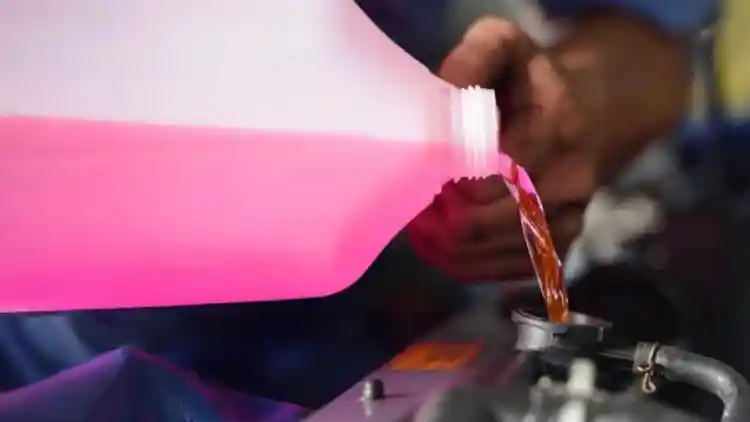- Should You Worry About Fluid Leaks Under Your Car?
- Common Types of Car Fluids That May Leak and Their Causes
- How to Identify the Leak Source
- What to Do If You Find a Leak?
- Tips to Prevent Fluid Leaks
يُعد اكتشاف تسرب السوائل تحت السيارة من الأمور التي قد تثير القلق لدى السائقين، خاصةً إذا لم يكن لديهم معرفة كافية بأنواع السوائل المختلفة التي تتدفق داخل السيارة وأسباب تسربها. في هذا المقال، سنقدم شرحًا مفصلاً لأنواع التسربات الشائعة، كيفية التعرف عليها، مدى خطورتها، والإجراءات التي يجب اتخاذها للحفاظ على سلامة السيارة والسائق.
Noticing fluid leaking under your car can be concerning, especially if you’re not familiar with the different types of fluids inside a vehicle and the reasons they might leak. In this article, we provide a detailed explanation of common leaks, how to identify them, their severity, and the steps you should take to keep your car and yourself safe.
Should You Worry About Fluid Leaks Under Your Car?
If you see fluid leaking from your car, you might wonder if it’s serious. One case that usually doesn’t require concern is if the fluid is clear, odorless, and doesn’t feel sticky—this is often just water from the air conditioning condensation or drops from the exhaust pipe. This is normal and harmless.
However, if the fluid is colored or has a distinctive smell, it likely indicates a problem that needs inspection. You can often identify the type of fluid by its color, location of the leak, quantity, texture, and smell.
Common Types of Car Fluids That May Leak and Their Causes
Condensation Water
Color/Smell: Clear, odorless.
Source: Air conditioning system or exhaust.
Severity: Low; normal and no action needed.
Coolant (Radiator Fluid)
Color: Green, orange, pink, or bluish-green.
Smell: Sweet, candy-like.
Source: Radiator, hoses, or water pump leaks.
Severity: Medium to high; coolant loss can cause engine overheating and damage.
Action: Inspect radiator and hoses; repair or replace faulty parts.
Brake Fluid
Color: Clear to light yellow, darkens with use.
Smell: Distinctive, somewhat fishy.
Source: Brake system leaks.
Severity: Very high; brake fluid loss can cause brake failure, posing serious safety risks.
Action: Immediate inspection and repair; towing may be necessary.
Engine Oil
Color: Amber when fresh, dark brown or black when used.
Smell: Strong, unpleasant.
Source: Oil pan, gaskets, valve covers leaks.
Severity: High; oil loss leads to engine wear and damage.
Action: Thorough engine inspection and prompt repair.
Transmission Fluid
Color: Red or light brown.
Smell: Sweet or slightly burnt.
Source: Transmission case or oil lines leaks.
Severity: Medium to high; fluid loss affects transmission performance and may cause damage.
Action: Regular monitoring and timely repair.
Power Steering Fluid
Color: Red or pink.
Source: Steering system leaks.
Severity: Medium; fluid loss makes steering harder and may damage the system.
Action: Check system, refill fluid, and fix leaks.
Windshield Washer Fluid
Color: Light blue or clear.
Smell: Often scented.
Source: Washer fluid reservoir or tubing leaks.
Severity: Low; important for visibility but not critical.
Action: Refill or repair leaks.
How to Identify the Leak Source
Leak Location:
Front of car: Usually AC water or coolant.
Under engine: Engine oil or transmission fluid.
Rear of car: Brake fluid or power steering fluid.
Under windshield: Washer fluid.
Fluid Color and Smell: As described above, these help identify the fluid type.
Leak Quantity: Small leaks may be less urgent, but large or continuous leaks require immediate attention.
What to Do If You Find a Leak?
Don’t ignore it: Even small leaks can worsen.
Monitor vehicle performance: If you notice braking issues or engine overheating, seek professional help immediately.
Identify the fluid: Use color, location, and smell to help determine the fluid type.
Visit a certified service center: For accurate diagnosis and repair.
In emergencies: For brake or engine oil leaks, consider towing instead of driving.
Tips to Prevent Fluid Leaks
Regular maintenance: Check and replace fluids as recommended.
Inspect hoses and rubber parts: These are prone to wear and leaks.
Watch for puddles: Even small spots under the car can indicate leaks.
Listen for unusual noises: Whistling or knocking sounds may signal problems.
Use genuine parts: To maintain system integrity.
Fluid leaks can signal minor or serious vehicle issues and should be addressed promptly. Recognizing the fluid type and source helps determine the right action—whether a simple fix or urgent repair. Regular maintenance and attention to warning signs ensure your safety and prolong your vehicle’s life.













